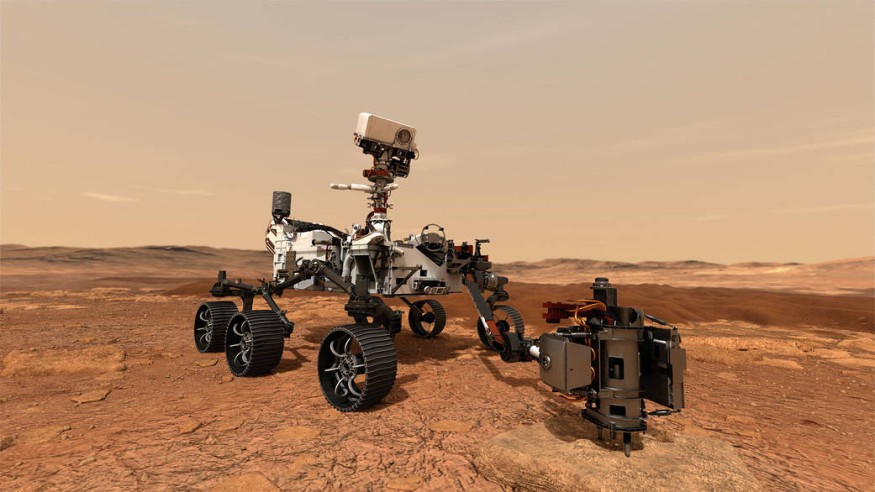
A robotic astrobiologist started a voyage to a distant planet in July 2020. NASA's Perseverance rover, scheduled to arrive on the Red Planet by February 2021, is already en route to Mars.
The project is being undertaken for seven years and will allow unparalleled exploration of Mars, which could have housed life billions of years ago.
What's Perseverance going to do on Mars?
Perseverance aims to search for answers to ancient existence on Mars. These hints may help scientists understand the planet's past, speculated to have once been a humid, habitable environment. Martian samples would also be gathered by the rover, stowing them away for a possible Earth trip.
Here's how the robot, the equivalent of one Martian year, would go on its long journey to Mars.
1. Perseverance Will Land in the Jezero Crater
The Jezero Crater, a 500-meter deep crater situated in a basin just north of the Martian equator, is Perseverance's landing site. Formerly host to a lake estimated to have dried out 3.5 to 3.8 billion years ago, Jezero Crater making it an excellent destination for searching for prehistoric, microscopic life that may once have lived on Mars.
2. Seven Minutes of Terror
Experts called the Perseverance rover's arrival and landing on Mars the "seven minutes of terror." That's how long it takes for the rover to get to the surface from the Martian atmosphere's top. It also takes the team an extra 14 minutes to obtain a signal from the Mars rover, given that there is a gap since Mars is millions of miles distant.
3. Perseverance Looking for Ancient Microbial Existence
While on Mars, the rover would search for evidence of habitability on the Martian surface and past microbial existence, capturing rock and soil samples and putting them aside for that planet's first-ever sample return mission. Using a convenient drill mounted to the robot's arm can gather at least 20 samples from Mars. The rock samples would be deposited in tubes on the Martian surface in a well-identified position and leave there to be returned to Earth.
4. Perseverance Doesn't Go Through It All Alone
Perseverance is not venturing on its own to Mars. The Ingenuity helicopter would hit the rover for a flight, enabling NASA to evaluate its capacity to operate a helicopter for the first time on a world other than Earth. Ingenuity will fly solo in a sequence of test flights after it detaches itself from the rover.
5. Perseverance Has a Top-of-the-Line Toolset
A highly trained team of detectives is onboard the rover: equipment such as SHERLOC (Scanning Habitable Areas with Raman & Luminescence for Organics & Chemicals) and WATSON, Operations Large Angle Topographic Sensor and e-Engineering platform. In Martian soil, they'll search for tiny hints.
6. Perseverance Lays Groundwork For Human Discovery
The project would also evaluate requirements for future human colonization of Mars by examining the Martian atmosphere's system of producing oxygen, characterizing environmental conditions such as Martian water and dust, and searching for resources.
On February 18, 2021, Perseverance will arrive on Mars. It will follow the rover Curiosity, which came on Mars in August 2012 and roam the Red Planet today.
Check out more news and information on Space on Science Times.
© 2026 ScienceTimes.com All rights reserved. Do not reproduce without permission. The window to the world of Science Times.











